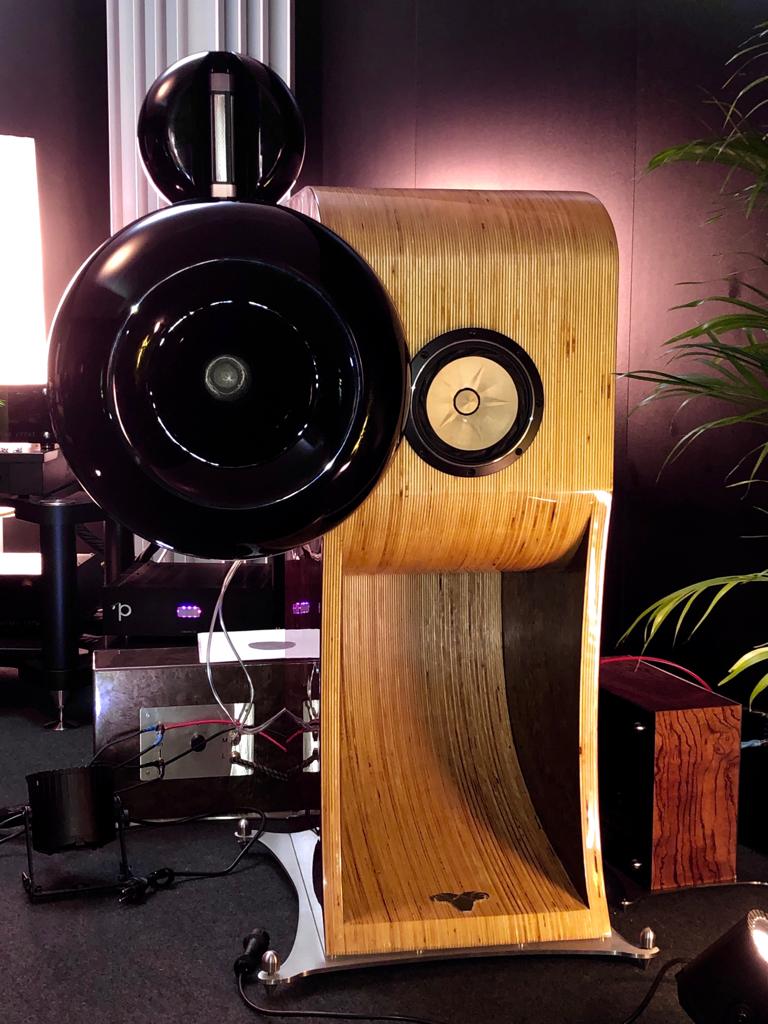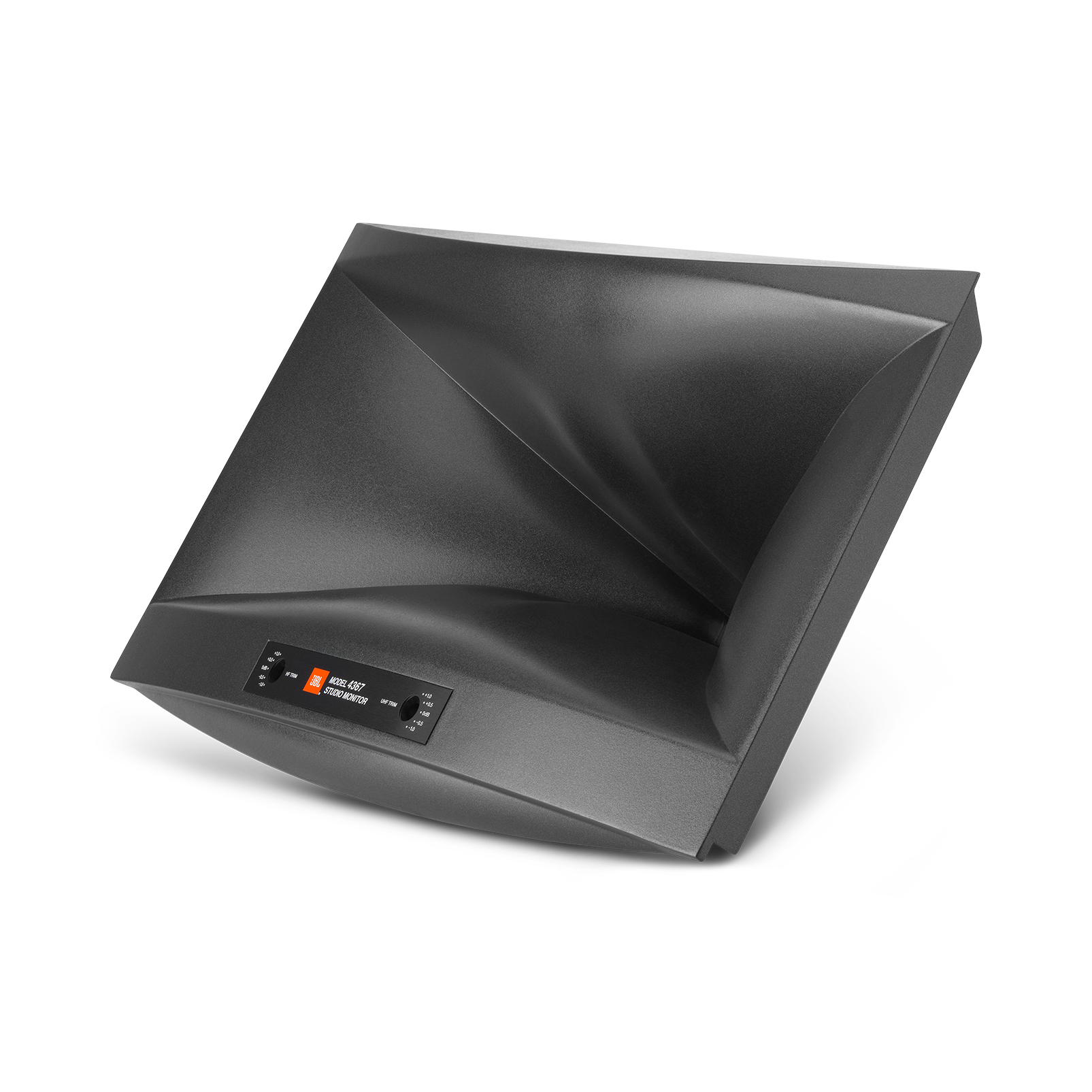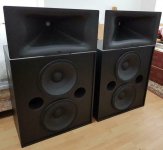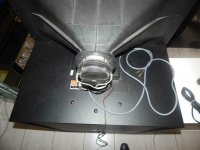I know what i like and dislike and through the 10years i spent read things here i learned i have 'plain vanilla' preference and i am average Bob regarding what are these preference: smooth power transfer and no lobe, and i like point source behavior and i need to be relaxed and focused to be into music...
We're on the same page here, krivium. It probably explains our mutual interest in synergies as well 😉
Why is constant directivity still ignored by many "high-end" speaker manufacturers?
Because they can make enough money on selling "bragging rights" alone?
Bling factor seems more important to sell something than quality or so it seems. A concept not limited to the audio industry.
Why is constant directivity still ignored by many "high-end" speaker manufacturers?
This is my thought exactly.
One reason for this may be that most high-end manufacturers tend to focus on the best "horn performance" (impedance matching), taking the CD penalty for granted.
High-end hornloaded loudspeakers have gained increasing popularity over the past 10-15 years. The vast majority rely on tractrix/spherical/JMLC and similar traditional horn contours.
However, some of these manufacturers do take directivity in consideration, even though it's not obvious from their marketing speak.
Instead they prefer "a lack of typical horn characteristics".
This is an example:

Last edited:
I like the relative simplicity of dipoles (OB), someone on the forum described them as "unfolded horns" ? 😉 Apparently if they have good front to back symmetry and are baffleless diffraction is almost non-existent too. Little potential for high-end manufacturer bragging rights though 😀
Last edited:
May I ask you what waveguide you are using ?
Regards
Charles
Mitch uses the JBL 2384, part. nr. 365359-001 waveguides on top of his JBL4722s.
About 6 months ago, a pair of 4722s in mint condition were offered for sale on the local German ebay site for only €1200 by the first owner who had used these for domestic hi-fi. Admittedly, I was tempted.
Still have the images:
Attachments
Last edited:
Eventually, size does matter, for good and for worse.
I am not restricted by WAF, but it's nonetheless inconvenient to move large and heavy loudspeaker systems.
Moreover, large cabinets visually dominate a living room and for this reason mine are sprayed in RAL9016.
The guy who bought B. Omholt's K402s has put those up for sale after only a couple of months, because his wife kindly requested him to get rid of these big black plastic objects.
I am not restricted by WAF, but it's nonetheless inconvenient to move large and heavy loudspeaker systems.
Moreover, large cabinets visually dominate a living room and for this reason mine are sprayed in RAL9016.
The guy who bought B. Omholt's K402s has put those up for sale after only a couple of months, because his wife kindly requested him to get rid of these big black plastic objects.
Last edited:
SEOS-30 – Horns by Auto-Tech - so basically something like this should be the "other" horn, a 36" wide SEOS.
Mitch uses the JBL 2384, part. nr. 365359-001 waveguides on top of his JBL4722s.
About 6 months ago, a pair of 4722s in mint condition were offered for sale on the local German ebay site for only €1200 by the first owner who had used these for domestic hi-fi. Admittedly, I was tempted.
Still have the images:
Both the 2384 and the 1" throat version 2374 are top notch horns.
Why is constant directivity still ignored by many "high-end" speaker manufacturers?
It isn't. Except when it is.
Point is, there is zero correlation between high-end and high performance. I don't mean none of them are high performance: I mean were you to plot them all on a graph of high-endness vs performance, there will be dots all over the page.
Both the 2384 and the 1" throat version 2374 are top notch horns.
No doubt about that. Still have a weak spot for the 235.. series though, despite being diffraction horns. The polars of these are nothing to sneeze at either.
It obvious where Celestion got inspiration from in development of the Axi-horns.

How exactly is the highly directive spectrum, lacking room energy, going to sound, in the sweet spot and why?
Super question, the kind that begs true understanding imo…..
My answer...I dunno…
Cause I know how much I love the sound of full-range electrostats.
But they are the epitome of requiring head-in-vise listening.
Horizontal sweet spot is +/- about 2-3".
Vertical HF/VHF dispersion ends like a wall, on a level plane perpendicular to their top.
And yet they have such glorious detail and imaging.
If they had low end dynamics and more SPL, I doubt i'd have ever ventured into proaudio speakers...head in-vise issue be damned LoL.
I still keep a pair of Acoustat-X running for maintaining sonic perspectives, and questioning room interactions.
So like said...I dunno..
I tend to believe CD's are an average solution to the average venue/room for the average listener...for very valid reasons.
They are my preference....as close to a point source as we can get, with smooth polars….
...the 60x40 synergy i'm working on is my 'mostest favoritist' sound I've heard yet. 😀
But perhaps we'll all be healed, once Mark100 has tested his PAS horns 😀

Haha ! I sure do need to get off my butt and do that 🙁
But you know, I've been enjoying my single synergy in mono so much, I haven't even been able to get out to the garage and build another.
Could have worse problems, huh brother? 🙂
I always wonder if there is any reason that almost of all studio large horn monitors still use Kinoshita style bi-radial (with lips) horn. Kinoshita, Augspurger, Ocean Way...
But you know, I've been enjoying my single synergy in mono so much, I haven't even been able to get out to the garage and build another.
Could have worse problems, huh brother? 🙂
Sure you could 🙂
Would love to hear your synergy, even in mono. Unfortunately we're a bit too far apart.
I always wonder if there is any reason that almost of all studio large horn monitors still use Kinoshita style bi-radial (with lips) horn. Kinoshita, Augspurger, Ocean Way...
Because they are proved to translate well and are kind of standard ( and obviously they sound good in the room they are used in).
That said in the last ten years a lot of big studios went down or changed owners ( in France) and this kind of monitors were either demantled either changed for the flavour of the day.
We all know that newer is better. 🙄
We all know that newer is better. 🙄
In the end, it remains to be seen wheter this is considerably better than the good 'ol radial horns.

In the end, it remains to be seen wheter this is considerably better than the good ol'radial
Well most of mains replacing them are not horn based from the one i've seen.
The one that i've found interesting are dome midrange based ( despite not being what i prefer), others are more common design in my view.
There is more refined design now in nearfield with waveguide or alternative approach like Kii or others.
Last edited:
ATC seems very popular for both nearfield and mains.
I haven't seen many Kii speakers in studios yet, but I know these are serious contenders, together with the other Dutch(&Dutch 8C) brand. The Grimm LS1, which was also co-developed by Bruno Putzeys, is used in several local studios.
I haven't seen many Kii speakers in studios yet, but I know these are serious contenders, together with the other Dutch(&Dutch 8C) brand. The Grimm LS1, which was also co-developed by Bruno Putzeys, is used in several local studios.
Last edited:
- Home
- Loudspeakers
- Multi-Way
- Is it possible to cover the whole spectrum, high SPL, low distortion with a 2-way?

